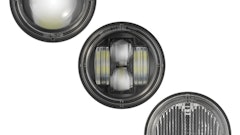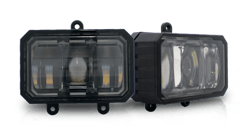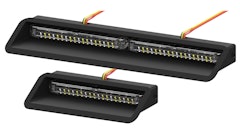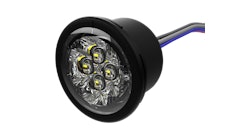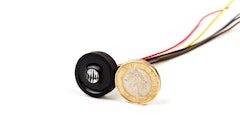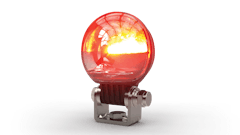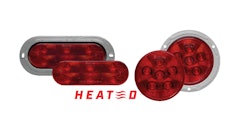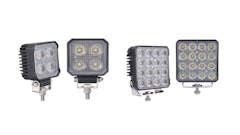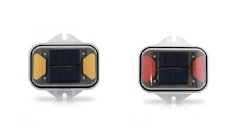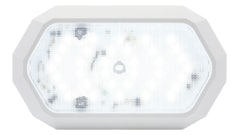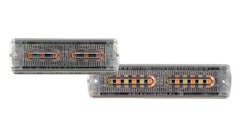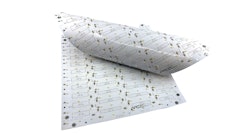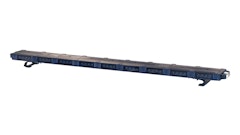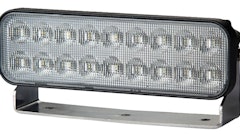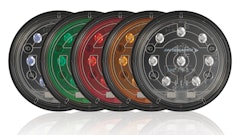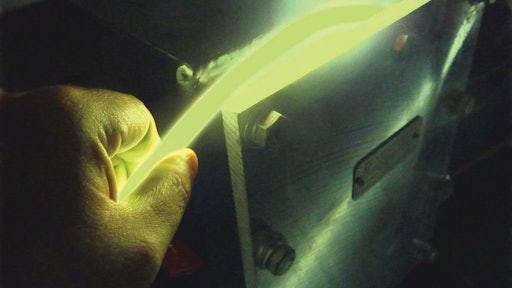
When the U.S. Navy needed an alternative to its traditional electrical lighting system, it tasked East Hartford, CT, manufacturer RSL Fiber Systems (RSL) with developing a technology that would not only meet its stringent lighting requirements but also reduce maintenance costs and keep sailors safe when lighting maintenance was performed. To fulfill this need, RSL developed a fiber optic lighting system called Remote Source Lighting, which remotely generates light and safely delivers it to the desired location.
In the fiber optic lighting system, an illuminator containing high-performance light-emitting diodes (LEDs) generates light that is transmitted over an optical fiber as pure light, instead of electricity, to a luminaire which reflects and directs the generated light in the desired location. Unlike traditional lighting systems, however, the illuminator does not need to be in the same location as the luminaire; the illuminator can be placed in a protected yet easy-to-access location within the vehicle to keep the light source from being damaged. “What we’re doing is reversing the paradigm of lighting that we’ve all grown up with,” says Peter Gladis, Director of Marketing at RSL. “Our approach removes the electricity from the cabling system and from where the light actually is displayed.”
The illuminator can be placed up to hundreds of feet away from the luminaire if necessary and used to light a single luminaire, or several, depending on the application. A single illuminator can be used to generate light for both headlights and both taillights on a vehicle, for example, by running an optical fiber cable to a non-electrical luminaire in each fixture, for a total of four optical fibers and four luminaires, but only one illuminator.
Keeping the illuminator in a separate location from the luminaire not only ensures the light source is well protected, but also helps improve safety for vehicle operators because everything after the illuminator is non-electrical. If the optical fibers or luminaires get damaged, they can quickly and easily be repaired without risk of short circuits or electrocution.
“We’re not attempting to replace day-to-day lighting needs,” says Gladis, “but [instead] lights in hard to reach, hazardous or unsafe-to-change locations. Before, it took a great deal of maintenance should the light bulb or LED lamp burn out, or even worse, they had to shut down the whole process to change that light.” RSL’s fiber optic lighting helps reduce downtime because the luminaire and optical fiber have no electrical components, and therefore can never burn out. And, the LED within the illuminator offers a 50,000- to 60,000-hour lifespan, ensuring it will last for several years. “On average, a [mining operation] mines $150,000 worth of coal an hour, so if you can eliminate as little as 15 minutes of repair time, you can save them approximately $25,000 per repair,” says Gladis.
While originally developed for the U.S. Navy, RSL’s fiber optic lighting has migrated into mining and other heavy-duty industries. Gladis says the coal mining industry has been particularly interested in this technology because of the concerns with electrical systems potentially causing methane and coal dust to ignite. In July of 2012, RSL received approval from the federal Mine Safety and Health Administration (MSHA) for its first mobile mine equipment lighting product, which will allow its use in U.S. mining applications to become more widespread.
Gladis says adapting the technology for use on mining equipment had its challenges but didn’t require reinventing the wheel. “[About] 75% of the technology we developed for the U.S. Navy is adaptable to mining and other applications,” he says. The biggest changes came in developing the right types of cabling and luminaires for mining equipment, as well as modifying the illuminator boxes for hazardous applications.
Military applications often have much different requirements than industrial applications, such as being able to see a light from as far away as six or seven miles, and the technology had to be adapted, notes Gladis. “When you go into a specific industry, you need to identify its unique lighting requirements, safety concerns, the light pattern, shape, intensity and location, and then design those system elements accordingly to fit that specific application,” Gladis says.
Additional benefits
The use of non-electrical components to deliver and reflect light in RSL’s lighting system eliminates any concerns about electromagnetic interference (EMI). “By the laws of physics, fiber optic cables and luminaires have zero EMI and RFI (radio frequency interference),” says Gladis. He notes that while this isn’t a primary benefit to the lighting system, it’s still an important one, especially with the large amount of electronics being included on vehicles today.
Gladis says the company has also heard from mining customers that fiber optic lighting has helped improve visibility within the mines because there is less glare than with traditional lighting. When you look at an LED headlight, for example, you’re looking directly at the LED itself, which can cause a significant amount of glare which may inhibit visibility. However, transmitting light over optical fibers “smooths” it out, reducing glare. “In an enclosed area like a coal mine, that’s extremely important,” says Gladis. This "smoothing out" of the light also enables the fiber optic lighting to perform well in even the deepest and darkest of working environments. “Essentially, the darker the better,” Gladis says.
Remote control of the light is another aspect that can benefit users of the lighting system. Operators can be in the cabin of the vehicle or a central control facility changing the light color, pattern and intensity, which can be more difficult to do with traditional, direct lighting systems. When used in a hazardous work environment, remotely controlling the light allows users to be productive while staying in a safe location in case there are any problems that arise.
Future potential
RSL is continuing to research and develop new applications for its fiber optic lighting system. One area in which the company sees potential is for use in fuel tanks, specifically when they are being cleaned or inspected. “Imagine going into a fuel tank and inspecting it,” says Gladis. “Due to the residual vapors, you [would] prefer not to go into those areas with an electrical lighting system because of the risk of a spark causing a vapor ignition.”
The company is also investigating other technologies to use as the light source in the illuminator, such as lasers. “[Lasers] could change the game significantly by reducing size and cost dramatically while increasing performance,” says Gladis. He notes that laser technology is evolving as quickly as LEDs, but its use as a light source is still a few years on the horizon.
In addition to using optical fibers to transmit light, Gladis says the company is investigating their potential use as sensors. He says optical fibers can be used for distributed temperature, chemical and vapor detection.
RSL’s main goal for additional developments of its fiber optic technology, whether it’s for lighting or other needs, is to provide a solution which increases safety. “At the end of the day it comes down to the bull’s-eye of what the technology is capable of,” says Gladis, which is providing a non-electrical illumination delivery and display system in applications where using electricity could be hazardous or have high maintenance costs.






